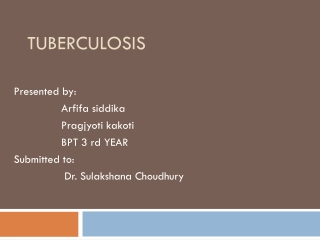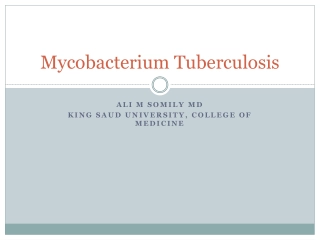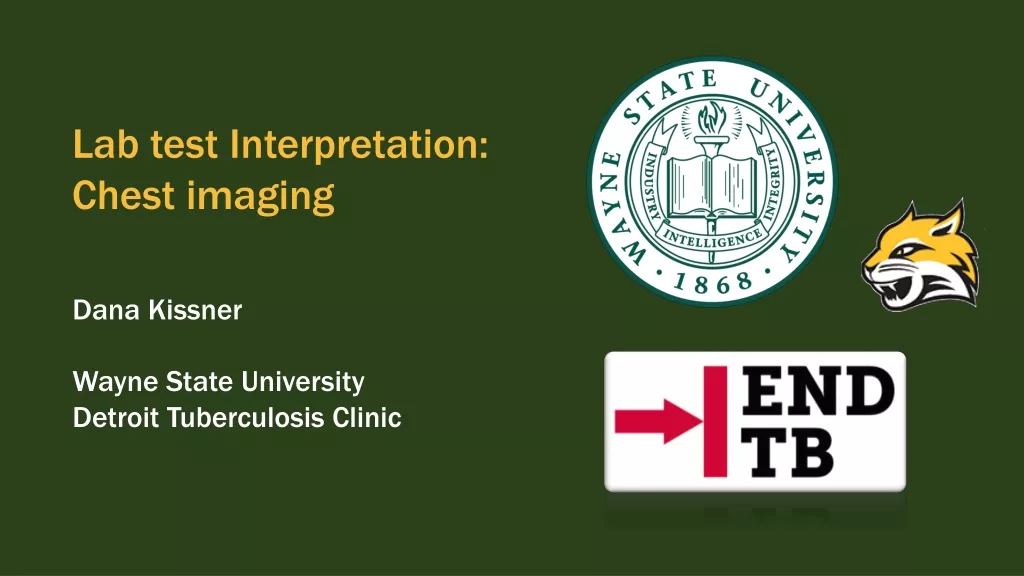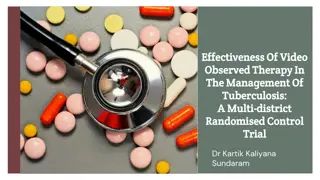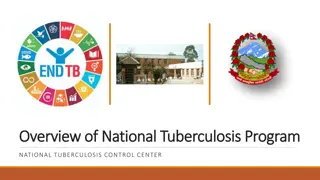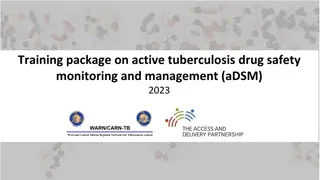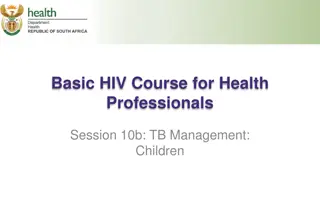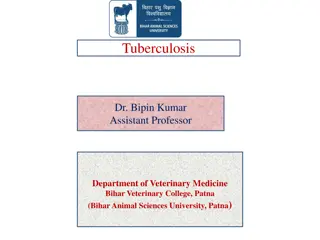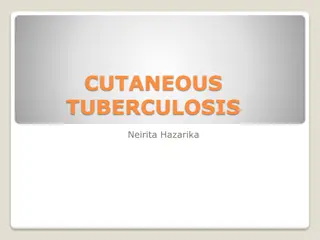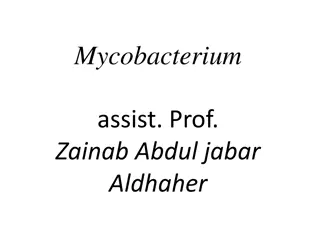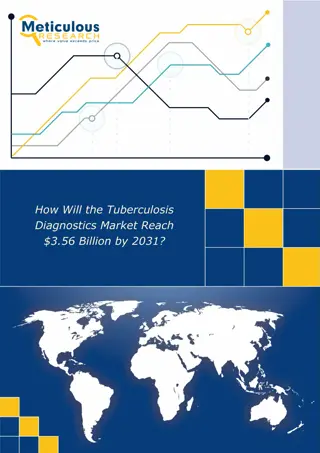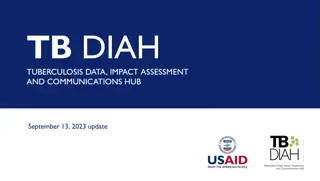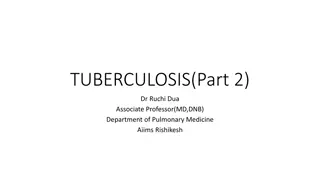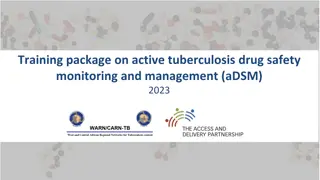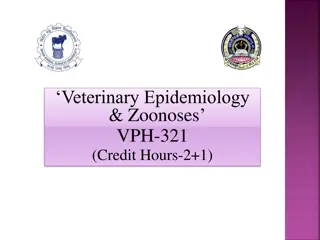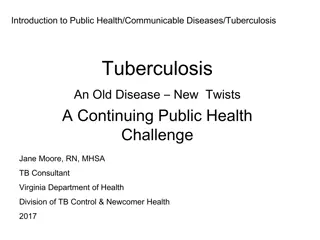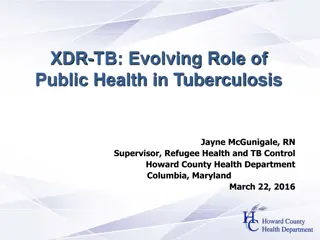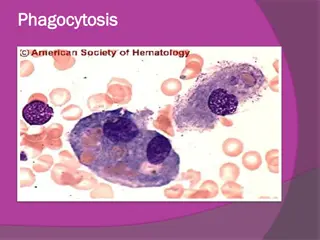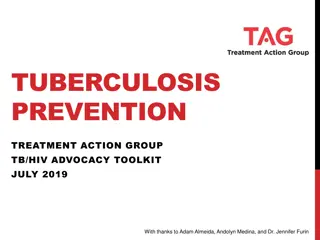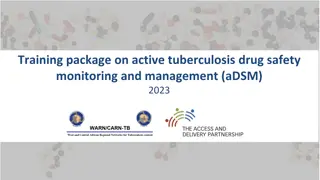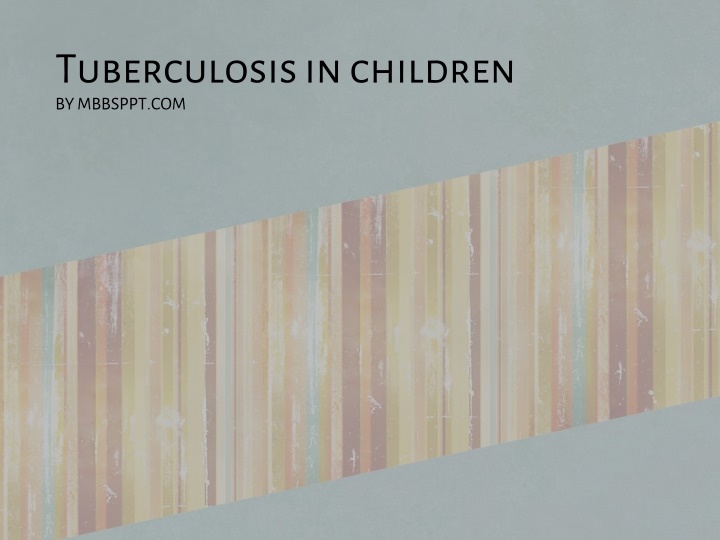
Childhood Tuberculosis: Definitions, Diagnosis, and Treatment Guidelines
Explore the epidemiology, case definitions, diagnostic algorithms, and treatment guidelines for childhood tuberculosis (TB) in this comprehensive lecture. Learn about failure to respond, relapse, treatment after default, and the diagnostic process for pediatric TB cases. Enhance your knowledge on categorization, treatment, and chemo prophylaxis as per National guidelines.
Download Presentation

Please find below an Image/Link to download the presentation.
The content on the website is provided AS IS for your information and personal use only. It may not be sold, licensed, or shared on other websites without obtaining consent from the author. If you encounter any issues during the download, it is possible that the publisher has removed the file from their server.
You are allowed to download the files provided on this website for personal or commercial use, subject to the condition that they are used lawfully. All files are the property of their respective owners.
The content on the website is provided AS IS for your information and personal use only. It may not be sold, licensed, or shared on other websites without obtaining consent from the author.
E N D
Presentation Transcript
Tuberculosis in children BY MBBSPPT.COM
Learning objective At the end of the lecture you should be able to understand: Epidemiology of childhood tuberculosis Case definitions of pediatric TB Diagnostic algorithm including investigations of childhood TB Categorization & Treatment of childhood TB as per National guidelines Chemo prophylaxis
Case definitions (RNTCP) Failure to respond: If within 12 weeks of compliant intensive phase treatment fails to achieve Bacteriological conversion from +veto -veAFB Clinical response Clinical improvement ( deterioration of condition) Relapse: A case of pediatric TB declared cured /completed therapy & again shows bacteriological & clinical evidence of TB
Case definitions (RNTCP) Treatment after default: A case who took at least 4 wks of ATT & comes after interruption of treatment for>=2 mths& has active disease (clinical/bacteriological) Others: For program purpose all retreatment cases where bacteriological confirmation could not be made but ATT started on clinical ground
Diagnostic algorithm of pediatric TB Persistent fever/cough>2 wks & or Loss of wt/no wt gain & or History of contact of infectious TB Sputum exam Sputum +ve Sputum ve/N.A Received full course of antibiotic or Sick look or respiratory distress or Any other indications for Xray chest Smear +ve PTB Treat according to guidelines
Yes NO Course of antibioticx7days X-ray chest & Mx No response X-ray suggestive & Mx +ve Either or both -ve Review for alt diagnosis GL/IS/BAL Smear -ve Smear +ve Snear ve PTB Treat as per guidelines Treat as per guidelines
Diagnostic algorithm of pediatric TB If X-ray chest- non specific shadow & Mx +ve or ve Rpt X-ray chest after a course of antibiotics if not given earlier still persistent non specific shadow with Mx +ve or ve do GL/IS/BAL smear +ve smear +ve PTB & treat as per guidelines. If smear is negative look for alt diagnosis (if no alt diagnosis then treat as smear ve PTB & treat as per guidelines)
Diagnostic algorithm of pediatric TB If X ray normal & Mx +ve review for alt diagnosis & treat accordingly If no alt diagnosis established look for extra pulmonary sites If no extra pulmonary sites involved take expert opinion (CT chest may be rqd.)
Diagnosis contd USG abdomen for lymph nodes FNAC & biopsy of involved lymph nodes/organs CT scan rarely rqd. Sero diagnosis- antibody or antigen tests not recommended (TB Elisa) Interferon gama release assay Early secretion antigen target 6 (ESAT6) & Culture filtrate protein(CFP10)- Quantiferron gold test and T- spot test TB PCR-NAAT Poor sensitivity but real time PCR-recommended by WHO
Treatment categories Two categories: Treatment of all new cases Treatment of all previously treated cases Two phases of treatment: Intensive phase (2-3 mths) Continuation phase ( 4 7 mths, extendable up-to a total period of treatment to 12 months on a case to case basis) During intensive phase of TB meningitis, streptomycin to be replaced by tab. Ethambutol
DOTS All critically sick patients should be given daily treatment in the hospital At discharge to be referred to nearest DOTS center & alternate day therapy recommended At DOTS center separate box for individual child maintained Drugs are given at DOTS center & if child vomits in half hour- dose is repeated
Anti tubercular drugs First line INH Rifampicin Ethambutol Pyrazinamide Streptomycin Rifabutin* Rifapentene* Second line Cycloserine Para aminosalisylic acid Ethionamide Amikacin/Kanamycin Capreomicin Levofloxacin Moxifloxacin Gatifloxacin
Treatment categories & regimen Category of treatment Type of patient TB treatment regimens (intensive phase) TB treatment regimens (continuation phase) 4H3R3 New smear positive cases New smear negative pulmonary TB New extra pulmonary TB *Relapse, failure to respond or treatment after default * Retreatment New cases 2H3R3Z3E3* Previously treated case 2S3H3R3Z3E3 + 1H3R3Z3E3 5H3R3E3
Drug dosage INH- 10 mg/kg/day (max- 300 mg/day) Rifampicin -10-12 mg/kg/day (max- 600 mg/day) Ethambutol- 20-25 mg/kg/day (max 1500 mg/day) Pyrazinamide- 30-35 mg/kg/day (max 2000mg/day) Streptomycin- 15 mg/kg/day (max 1gm/day)
Chemoprophylaxis Indications: All asymptomatic contacts of a smear positive case( < 6 yrs age)after ruling out active disease & irrespective of BCG and nutritional status. HIV infected children in contact with smear positive case or Mx positive (>+ 5mm) but not active disease
Chemoprophylaxis contd. All Mx positive children receiving immunosuppressive therapy e.g nephrotic syndrome, acute leukemia etc. Infant of mothers with TB diagnosed in pregnancy ( BCG vaccine can be given along with chemoprohylaxis Chemoprophylaxis is given with INH- 10 mg/kg/day x 6 mths.
MDR & XDR TB MDR TB- resistant to INH & Rifampicin X-DR TB MDR TB+ resistant to Quinolones + resistant to any one of the following kanamycin/capreomycin/amikacin
TB bacillus concn & microscopic yeild No. of bacilli Observed Estimated concentration of bacilli per ml of specimen <1000 Probability of a positive result 0 in 100 or more field <10% 1-2 in 300 fields 5000-10000 50% 1-9 in 100 fields about 30 000 80% 1-9 in 10 fields about 50 000 90% 1-9 per field about 100 000 96.2% 10 or more per field about 500 000 99.95%

